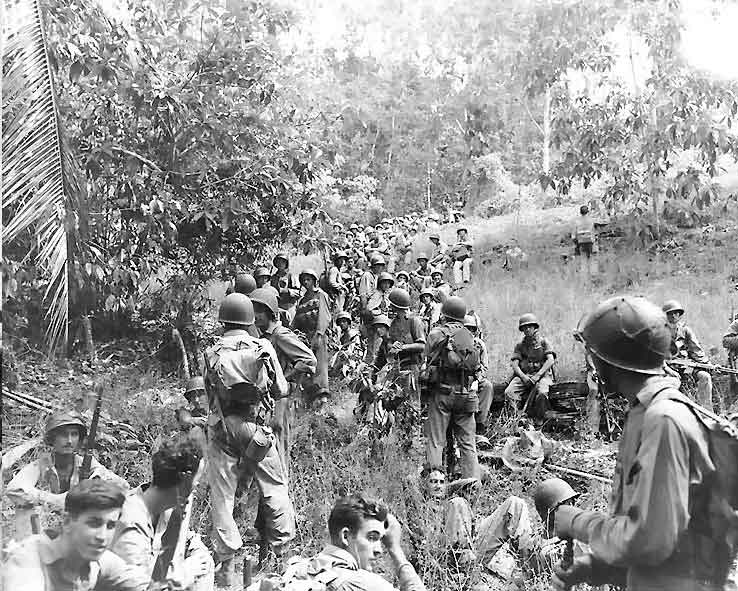August 1942 Battle of GuadaLcanal- Salvo Island

Marines on Guadacanal
The Allied forces landed on Tulagi, Gavutu, Tanambogo and the larger Guadalcanal on April 7th. Despite strong resistance Marines from the 1st Marine Division captured the first three islands in two days. 13,000 marines landed on Guadalcanal. They quickly captured the airfield but before all of their supplies could be unloaded the Japanese attacked and the Navy withdrew, not before losing the Battle of Savo Island.Following the Battle of Midway, the Allied forces recognized the opportune moment to initiate a campaign to retake the Pacific. The initial objective was to secure the Solomon Islands, strategically positioned across the sea lanes leading to Australia. The Allied strategy focused on capturing Guadalcanal, Tulagi, and Florida Island.
In May, the Japanese had gained control of Tulagi and established a seaplane base there. In July, the Allies discovered the construction of an airfield on Guadalcanal, which they feared could accommodate long-range aircraft capable of attacking Allied sea lanes. This revelation prompted the Allies to expedite their plans.
On June 19, 1942, Vice Admiral Robert Ghormley assumed command of the Southern Pacific theater. General Alexander Vandefrift’s 1st Marine Division was tasked with capturing the islands. The Allied force, comprising 75 warships and transports, was designated as Watchtower.
The task force arrived off the islands on the night of August 6th. Due to adverse weather conditions, the task force managed to arrive undetected. Approximately 3,000 Marines launched an assault on Tulagi and the nearby islands of Gavutu and Tanambogo. Despite valiant resistance from the Japanese, who fought to the last man, both islands were secured within two days at a cost of 122 Marine lives.
At 9:10 AM on August 7th, 11,000 US Marines arrived ashore. They encountered minimal resistance and secured their initial objective, the airfield, by the following day. The Japanese had abandoned the field.
Meanwhile, Japanese land-based aircraft attacked the ships participating in the landing, sinking one and damaging another. The Japanese allowed 36 aircraft to escape, while the US lost 19. Admiral Fletcher, concerned about the potential shortage of aircraft to defend his ships in harbor, ordered the carriers to depart in the evening of April 8th and the transports the following day, despite the fact that they had only unloaded half of their supplies.
That night, the Japanese launched an attack.
Admiral Mikawa led a task force consisting of five heavy cruisers, two light cruisers, and a destroyer to assault the American forces off the island. The Allies had deployed five heavy cruisers and a destroyer to protect the transports. The American group was divided into two units and remained unaware of the approaching Japanese ships.
The battle commenced when Japanese float planes, flying unmolested above the American cruisers, released flares. Within moments, Japanese guns had ignited the HMAS Canberra. Moments later, the USS Chicago was similarly engulfed in flames. Soon thereafter, the Japanese turned their attention to the Northern group, and the Astoria, Quincy, and Vincennes were swiftly rendered out of action and ablaze. Consequently, in the worst naval defeat in history, the US Navy, along with the Australian forces, lost five cruisers without inflicting substantial casualties on the enemy.
 >
>